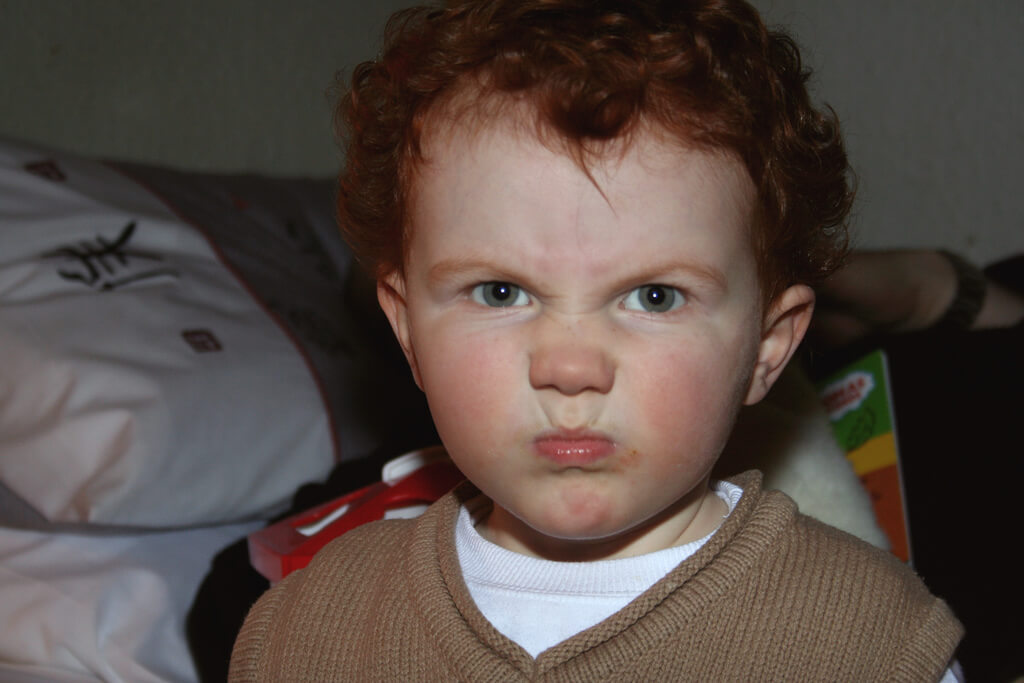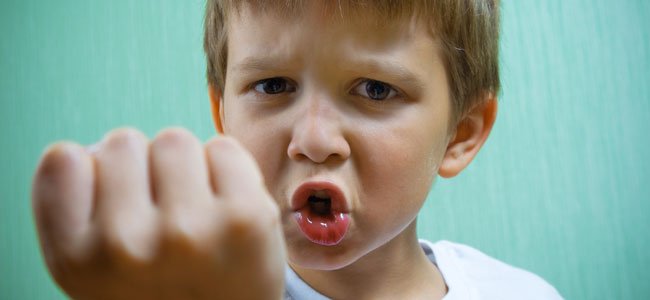What Is Sudden Childhood Aggression?


Written and verified by the psychologist María Alejandra Castro Arbeláez
If you have children, perhaps you have seen the manifestation of sudden childhood aggression and you aren’t sure what it is or how it can be treated. Keep reading, because we’ve brought you the details.
Sudden childhood aggression
Certainly, this attitude could be a symptom of dissatisfaction, an answer to this feeling. It would be habitual behavior through which the child shows dissatisfaction with a certain situation. This is the origin of sudden childhood aggression.
If you observe this type of behavior, you must ask yourself what might be happening to provoke this behavior. It could be the consequence of, say, the child no longer getting to watch as much television as he wants, or it could even be from an absence of the love that he needs.
Another reason why sudden childhood aggression could appear would be related to a feeling of possible threat. In other words, the child feels threatened by something. For example, it could be a reaction to something he did not like or that puzzled him.

All of these situations could provoke the following reactions:
- Verbal aggression, such as insults or the parents’ tone of voice.
- Lying in order to get out of a punishment
- Resorting to tantrums to get out of a punishment
When does this aggressiveness appear?
One of the moments in which this type of behavior usually appears is when the child has a younger sibling. Perhaps a feeling of displacement takes over and makes him act in this way, as he feels separated from his role as the baby.
This behavior would be a way for him to try to recover his position and power. This type of attitude is also frequently seen when cousins or friends visit, as they attract additional attention from adults.
How to respond to this attitude
Once you have detected the origin of the problem, it is convenient to know how to respond to this type of behavior. The key is to offer understanding and firmness to promote the child’s manners:
- Understand what is happening to your child. You will have to assess whether your little one is right to claim his needs and to try to satisfy them or not. If you think he should not, don’t give in to his whims and demands.
- Try to calm him down. If you see that your child starts to suddenly get upset, try to calm him. To do this, ask him to lower his voice and tell him not to keep behaving this way or there will be consequences.
- Stay firm. Keep in mind that the role of parents is to stand firm and never respond to whims by giving in to them. Otherwise, the child will see that if he behaves like this, he gets what he wants.
- Patience is another key. Avoid losing your temper. Responding to these situations with agitated behavior will not solve anything. As parents, we must remain calm at all times and be able to reprimand the child in a calm way.
Other interesting information
Bear in mind that children relate to others the same way their parents do. If they see that you maintain a calm relationship with others, your children will display the same behavior with their friends. But if your relationships are hostile, your child will follow this attitude as well.

Therefore, we must be careful not to respond to aggression with more aggression. It is about the social learning that occurs through aggressive behaviors.
This can be translated into learning through imitation or observation of the modeled behavior. That is why it is so important for the child to have parents who are good role models.
Finally, do not forget that educating children is a task that requires time and dedication. Parents must try to reach a consensus so that the child’s education is not contradictory, where one parent does one thing and the other parent does the opposite.
If one parent allows everything and the other allows nothing, the child will be confused and will probably rebel against the one who does not give consent.
All cited sources were thoroughly reviewed by our team to ensure their quality, reliability, currency, and validity. The bibliography of this article was considered reliable and of academic or scientific accuracy.
- Train, A. (2001). Agresividad en niños y niñas: ayudas, tratamiento, apoyos en la familia y en la escuela (Vol. 158). Narcea Ediciones. https://books.google.es/books?hl=es&lr=&id=Kmftj1PH1YoC&oi=fnd&pg=PA9&dq=agresividad+niños&ots=Zk7mHm2k5B&sig=2tru8a7SyCz7LS6NWBq3f9YWhGk#v=onepage&q=agresividad%20niños&f=false
- Bernal, L. V. L. (2010). Agresividad en niños y niñas, una mirada desde la psicología dinámica. Revista Virtual Universidad Católica del Norte, 1(31), 274-293. https://revistavirtual.ucn.edu.co/index.php/RevistaUCN/article/view/45
- Noroño Morales, N. V., Cruz Segundo, R., Cadalso Sorroche, R., & Fernández Benítez, O. (2002). Influencia del medio familiar en niños con conductas agresivas. Revista cubana de Pediatria, 74(2), 138-144. http://scielo.sld.cu/scielo.php?script=sci_arttext&pid=S0034-75312002000200007
This text is provided for informational purposes only and does not replace consultation with a professional. If in doubt, consult your specialist.
